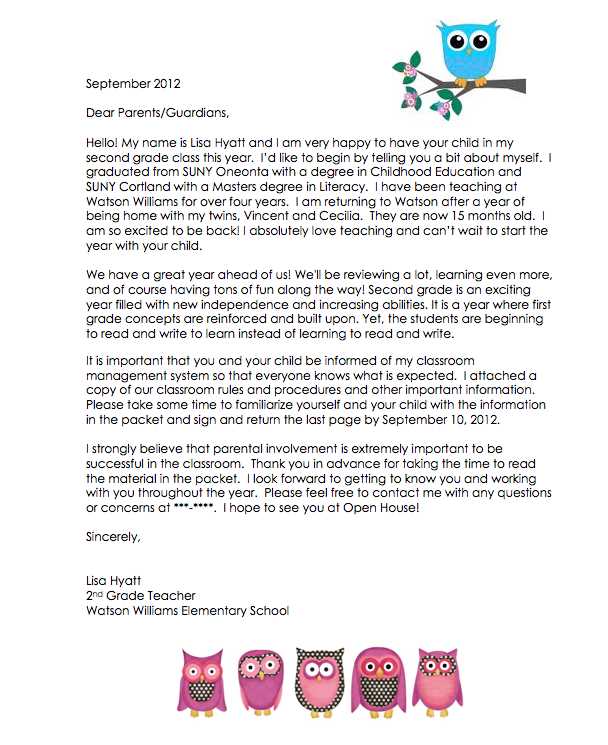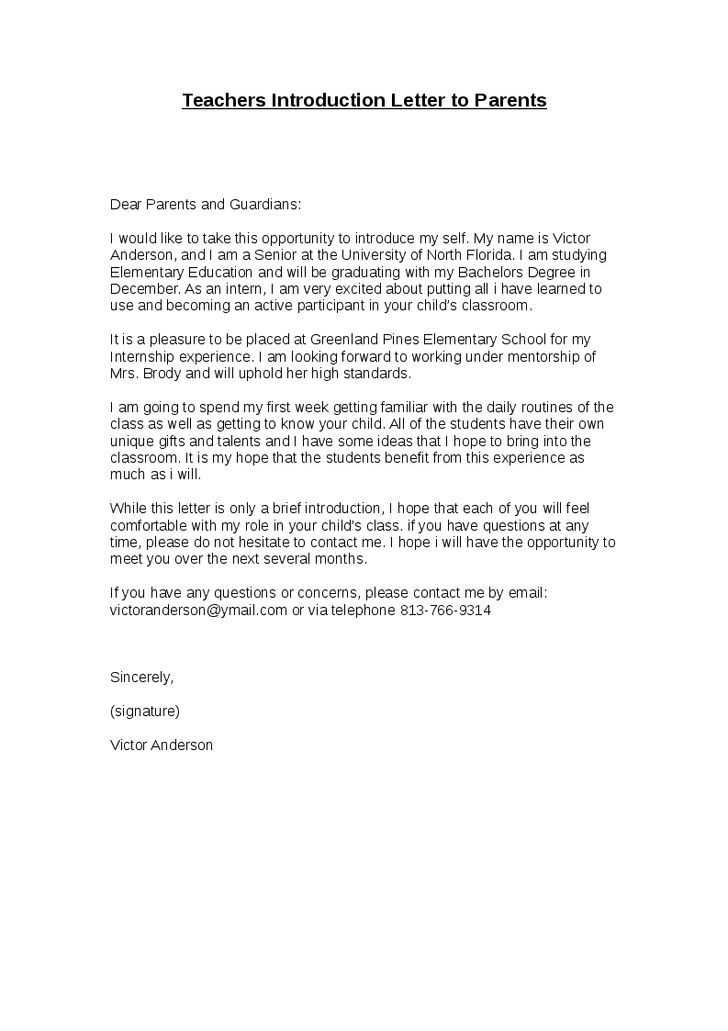Teacher Introduction Letter to Parents Template

Establishing a strong connection between educators and families is crucial for a positive learning experience. A well-crafted message can set the tone for a productive relationship, ensuring that both sides feel informed and involved in the educational process.
When crafting such communications, it’s important to highlight key aspects of the educational approach, share relevant goals, and open lines for ongoing dialogue. This fosters a sense of trust and collaboration that benefits both the student’s development and the classroom environment.
Clear and thoughtful communication can create lasting impressions, offering an opportunity to build rapport and ensure that families are aligned with the values and expectations of the learning journey. Personalization and an approachable tone are essential in conveying warmth and professionalism.
Key Elements to Include in the Letter
When creating a formal communication between educators and families, it’s essential to include the most important details that will help set expectations and establish trust. The content should provide a clear overview of the purpose and tone of the relationship, while also offering relevant information about the learning environment.
Start by introducing the role and responsibilities that the individual will hold in the educational setting. Highlight any relevant experience or background that builds credibility. Following this, include key goals for the upcoming period and how families can contribute to achieving those objectives.
Also, it is helpful to mention communication channels and preferred methods of contact. This ensures that both sides know how to stay connected and keep the conversation open. Finally, express enthusiasm and a commitment to collaboration, reinforcing a positive and proactive approach to the learning journey.
How to Personalize the Template

Personalization plays a key role in creating a meaningful connection between educators and families. Tailoring your communication to reflect individual student needs, family dynamics, and specific goals helps foster trust and engagement. It ensures that the message feels relevant and thoughtful.
Include Specific Student Details
One effective way to personalize is by mentioning specific characteristics or goals for the student. Referencing a student’s strengths, challenges, or areas of focus for growth creates a more individualized message. It shows that the educator is attentive to each child’s unique needs and is invested in their success.
Reference Family Preferences

Consider incorporating any preferences or expectations families may have expressed. Whether it’s about communication frequency, involvement in activities, or specific approaches to learning, acknowledging these preferences strengthens the relationship and shows that their input is valued.
Best Practices for Tone and Style
The tone and style of any communication between educators and families should convey professionalism, warmth, and clarity. Striking the right balance helps ensure that the message is well-received and fosters a positive, collaborative atmosphere. A friendly yet respectful tone builds rapport, while clarity avoids misunderstandings.
Maintain a Warm and Approachable Tone
It is essential to be warm and approachable in your message. Using a friendly, conversational style makes the communication more personal and relatable. Phrases that express enthusiasm or excitement about the upcoming period help create a positive first impression and set an optimistic tone.
Be Clear and Concise
While a friendly tone is important, clarity should not be sacrificed. Avoid overly complex language and ensure that the message is easy to understand. Be concise, focusing on key points to avoid overwhelming the reader. Clear communication helps to establish trust and makes it easier for families to stay informed.
Common Mistakes to Avoid

When crafting a formal communication with families, it’s easy to overlook key aspects that can affect the tone and clarity of the message. Avoiding certain common errors can ensure that the communication is well-received and effective in building a strong, positive connection.
One frequent mistake is using overly formal or complicated language that might alienate the reader. A message that feels too rigid or impersonal can hinder the development of a warm, collaborative relationship. It’s important to keep the tone approachable while maintaining professionalism.
Another error is failing to clearly convey key details, such as expectations, communication preferences, and goals. Leaving these aspects vague or incomplete can create confusion and missed opportunities for engagement. Being specific and transparent ensures that the family understands how they can contribute to the learning experience.
Tips for Effective Parent Communication

Maintaining an open line of communication between educators and families is crucial for fostering a successful learning environment. When sharing important information, it’s essential to approach the conversation thoughtfully to ensure clarity and engagement.
- Be proactive: Initiate regular check-ins to keep families informed about student progress and upcoming events.
- Listen actively: Pay attention to feedback from families and respond thoughtfully to their concerns or suggestions.
- Set clear expectations: Clearly outline any academic goals, behavioral expectations, or special activities so families know how to support the learning process.
- Be concise: Avoid overwhelming families with too much information at once. Focus on the most important details.
- Use multiple channels: Leverage various communication methods, such as emails, phone calls, or digital platforms, to ensure accessibility and convenience for all families.